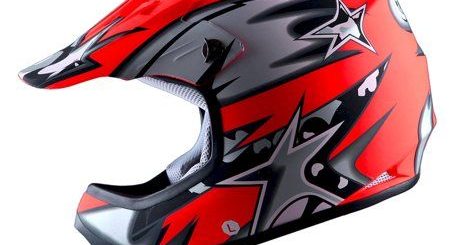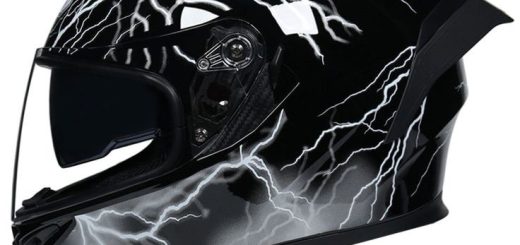How Should Your Motorcycle Helmet Fit: A Comprehensive Guide
A motorcycle helmet is more than just a protective accessory; it’s your first line of defense against potential head injuries. A poorly fitted helmet can compromise your safety and comfort, making every ride a risky endeavor. Understanding how your motorcycle helmet should fit is crucial for maximizing protection and enjoying a pleasant riding experience.
The Importance of a Proper Fit
A helmet that fits correctly is snug without being uncomfortable. It should envelop your head without any gaps or pressure points. A helmet that’s too loose can shift during an impact, reducing its effectiveness. Conversely, a helmet that’s too tight can cause discomfort, headaches, and even restrict your vision.
How to Determine Your Motorcycle Helmet Size
Before you start trying on helmets, you’ll need to know your head circumference. Use a soft measuring tape to measure the largest part of your head, just above your eyebrows. Most helmet manufacturers provide sizing charts to help you find the right fit. Remember, helmet sizes can vary between brands, so it’s essential to try on different models.
The Perfect Fit: Key Indicators

- Snugness: Your helmet should feel snug on your head, but not tight. You shouldn’t be able to move it around easily.
- Cheek Pads: The cheek pads should create gentle pressure on your cheeks. Your skin should be slightly pushed up, giving you a “chipmunk cheek” look.
- Forehead: The helmet should rest comfortably on your forehead without any gaps. Your eyebrows should be just below the helmet’s bottom edge.
- Chin Strap: The chin strap should fit securely under your chin, with no slack. It should be tight enough to prevent the helmet from coming off in a crash.
- No Pressure Points: You shouldn’t experience any discomfort or pressure points on your head or face. If you do, try a different helmet or size.
The Fit Test
Once you’ve found a helmet that seems to fit, it’s essential to perform a fit test.
- Put on the helmet: Make sure it’s centered correctly on your head.
- Check for movement: Try to move the helmet up and down, side to side, and front to back. There should be minimal movement.
- Test the chin strap: Fasten the chin strap securely and try to pull the helmet off. It should resist your efforts.
- Check for gaps: Look for any gaps between your head and the helmet. There should be no visible daylight between the helmet and your head.
- Consider comfort: Wear the helmet for a few minutes to ensure it’s comfortable. If you experience any discomfort, try a different size or model.
Common Fit Mistakes
- Wearing a helmet too loose: A loose helmet can shift during a crash, reducing its effectiveness.
- Wearing a helmet too tight: A tight helmet can cause discomfort and headaches.
- Ignoring pressure points: Ignoring pressure points can lead to long-term discomfort and even skin irritation.
- Not trying on different brands: Helmet shapes vary between brands, so it’s important to try on different models to find the perfect fit.
Motorcycle Helmet Styles and Fit
Different helmet styles have unique fit characteristics.
- Full-face helmets: Offer the best protection but can be more challenging to fit due to the chin bar.
- Modular helmets: Combine the features of full-face and open-face helmets and can offer a slightly different fit.
- Open-face helmets: Generally easier to fit but offer less protection than full-face or modular helmets.
- Dual-sport helmets: Designed for both on-road and off-road riding, they often have a more aggressive fit.
Tips for Buying a Motorcycle Helmet
- Try on multiple helmets to find the best fit.
- Don’t buy a helmet based on price alone.
- Consider your head shape when choosing a helmet style.
- Read online reviews to get an idea of how a helmet fits different head shapes.
- Buy from a reputable retailer that offers a good return policy.
Maintaining Your Motorcycle Helmet
- Follow the manufacturer’s care instructions.
- Avoid exposing your helmet to extreme temperatures.
- Inspect your helmet regularly for damage.
- Replace your helmet after a major impact, even if there are no visible signs of damage.
The Outer Shell: Your Helmet’s First Line of Defense
The outer shell is the visible part of your helmet. It’s designed to withstand initial impact forces. While various materials are used, these are the most common:

- Polycarbonate: This is a popular choice due to its balance of strength, weight, and affordability.
- Fiberglass: Known for its exceptional strength-to-weight ratio, fiberglass helmets offer superior protection.
- Carbon Fiber: The pinnacle of helmet materials, carbon fiber helmets are incredibly strong, lightweight, and expensive.
- Advanced Polymer Composites: Many manufacturers use proprietary blends of materials to achieve specific performance characteristics.
The shape of the outer shell is also critical. An aerodynamic design reduces wind resistance and turbulence, enhancing stability and comfort.
The Inner Liner: Absorbing the Impact
Beneath the outer shell lies the inner liner, made from Expanded Polystyrene (EPS) foam. This crucial component is designed to absorb and dissipate impact energy, protecting your brain. The density and structure of the EPS foam vary depending on the helmet’s intended use.
- Multi-Density EPS: Many modern helmets feature EPS foam with varying densities to optimize impact absorption.
- Impact-Absorbing Liners: Some helmets incorporate additional impact-absorbing materials, such as gel or liquid-based technologies, for enhanced protection.
Ventilation and Comfort
A well-ventilated helmet keeps you cool and comfortable, preventing fogging and reducing fatigue. Ventilation systems typically involve intake vents on the front and exhaust vents at the rear.
- Channel System: Internal channels distribute air evenly throughout the helmet.
- Moisture-Wicking Liners: Removable and washable liners help to manage moisture and keep you comfortable.
- Aerodynamic Design: The helmet’s shape can influence airflow and reduce wind noise.
Advanced Motorcycle Helmet Technologies
Helmet technology continues to evolve, with new innovations aimed at improving safety and comfort.
- MIPS (Multi-directional Impact Protection System): This technology allows the helmet to rotate independently of the head in an angled impact, reducing rotational forces on the brain.
- Emergency Release Systems: These systems allow emergency personnel to remove the cheek pads to access the injured rider without damaging the helmet.
- Communication Systems: Integrated communication systems offer hands-free communication with other riders or your smartphone.
Choosing the Right Motorcycle Helmet
When selecting a helmet, consider the following factors:
- Helmet Type: Full-face, modular, open-face, or dual-sport, based on your riding style.
- Fit: A proper fit is paramount for safety and comfort.
- Ventilation: Adequate ventilation is essential for long rides.
- Safety Standards: Ensure the helmet meets or exceeds relevant safety standards (DOT, ECE, Snell).
- Budget: Helmets range in price, so consider your budget.
- Features: Additional features like drop-down sun visors, communication systems, or emergency release systems can enhance your riding experience.
Remember: A motorcycle helmet is an investment in your safety. Don’t compromise on fit, quality, or safety standards.
Factors to Consider When Choosing a Motorcycle Helmet

- Ventilation: Crucial for long rides or hot weather. Look for helmets with multiple intake and exhaust vents.
- Visor or Shield: Consider the quality of the visor or shield, its clarity, and anti-fog capabilities.
- Comfort: The interior lining should be comfortable, moisture-wicking, and removable for cleaning.
- Noise Reduction: Some helmets offer better noise insulation than others.
- Weight: A lighter helmet can reduce neck strain on long rides.
- Safety Standards: Prioritize helmets that meet or exceed safety standards like DOT, ECE, or Snell.
- Additional Features: Consider options like drop-down sun visors, built-in communication systems, or emergency release systems.
Conclusion: Invest in Your Safety
A properly fitted motorcycle helmet is essential for your safety. By understanding how your helmet should fit and taking the time to find the perfect one, you can significantly reduce your risk of head injury in the event of a crash. Remember, a helmet is an investment in your life, so don’t compromise on fit or quality.


